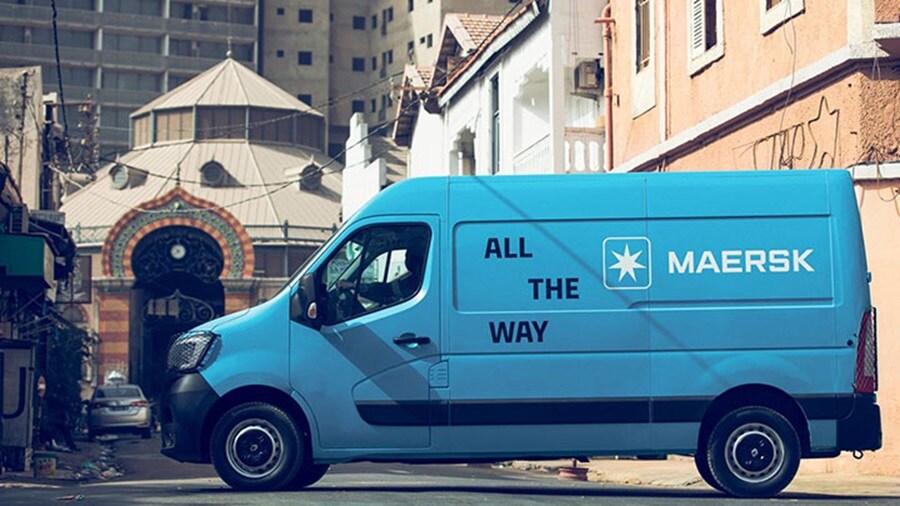When did you last order something online? Was it recently, or maybe even today? If so, you are very much on trend.
The value and importance of E-Commerce is continuing to grow, particularly in Europe, but it’s still yet to reach its peak. Regional forecasts expect the industry to accelerate its growth in 2023, with retail E-Commerce sales in Europe anticipated to rise to $1.2 billion by 2025.
Restrictions imposed during the Covid pandemic saw millions of additional consumers switch to shopping online, but many are feeling economic stress now more than ever thanks to the likes of rising food and energy prices. As a result, online purchasing behaviour is changing, with consumers spending less on premium brands and preferring budget retailers.
Despite these developments, there is hope in the E-Commerce industry that such an economic slump is merely a temporary setback. Compared to brick-and-mortar retailers, online shops are expected to benefit in the long run from consumers being more aware of pricing, thanks to competitive advantages (such as lower staff requirements and no rental costs for retail space) enabling online retailers to offer cheaper prices compared to their in-store counterparts.
Take E-Commerce across the border

A lot of E-Commerce companies are focusing more and more on sales to another region or country – and for good reason. According to Ogo Ship, over 73% of online consumers in Europe shop in other countries than their own, which means there’s great potential for companies to grow and be more profitable using cross-border E-Commerce.
With an increased market reach, higher sales through a broader, international customer base, non-season demand throughout the year and higher visibility of your brand, you can gain a real competitive advantage with the right strategy in place.
E-Commerce between Turkey and Germany is one such example where the potential of crossing the border with sales can give businesses an edge.
From Turkey to Germany
Turkey and Germany have a special bond with each other, largely based on the high proportion of people with Turkish roots living in Germany. In the first major waves of immigration, many Turkish people moved to Germany to work and save money before returning to Turkey to start a new life with the savings. Due to political stability in Germany, starting families and a growing Turkish community, in the end a lot of people ultimately settled for the long term.
According to the Microcensus, around 12.3% of the 22.3 million people in Germany with a "migrant background" have Turkish roots. In 2021, this translated to approximately 2.75 million people, making them the largest group with a migration background in the country. Some families with Turkish roots have been living in Germany for four generations, but many of them still maintain a strong connection to their relatives in Turkey and are actively aware of their heritage.
This is also reflected in shopping behaviour, as a lot of citizens order products from Turkey in order to bring a piece of their homeland to Germany. In 2022, Turkey's exports to Germany reached an all-time high, valued at $188.22 billion, and saw growth of 17.1% - showing just how significant the impact of Turkish culture and commerce is in Germany.

Notably, E-Commerce marketing from Turkey is experiencing significant growth too, with volumes increasing by 69% in 2021 compared to the previous year. Among the fastest-growing E-Commerce sites in Turkey are virtual marketplaces, with Trendyol leading the pack.
With over 30 million customers and more than 260,000 sellers, Trendyol launched in Germany in the summer of 2022, marking its entry into the EU market. Furthermore, with Alibaba there is another big player in the game now. By leveraging Turkey's robust production capabilities and collaborating with the shopping app Trendyol, the major Chinese E-Commerce company aims to expand its reach in Europe. The strategic location of Turkey, which serves as a bridge between Asia and Europe, has prompted Alibaba to establish a logistics center at Istanbul Airport, among other ventures.
Tackling cross-border challenges
As high as the potential for cross-border E-Commerce is, trade between EU and non-EU countries comes with numerous challenges, including frequently changing import regulations. For internet orders, the amount of import duty depends on the tangible value and the type of shipment. If the value of goods does not exceed €150, the consignments are exempt from customs duties, but import VAT of 19% or 7% and excise duty (for consignments of goods subject to excise duty) must be levied.
With the right setup, companies can ensure that their end consumers are not burdened with customsinvoices, as long as they take two key components into account: import duties and taxes, and documentation requirements mandated by customs authorities. Companies must be aware of the associated costs and ensure that they are factored in upfront.
With regards to customs, IOSS (Import One Stop Shop) clearance is a possible solution. It enables suppliers and electronic interfaces that sell imported goods to buyers in the EU to collect, declare and pay the VAT to the tax authorities. As a result, customers can be assured that their buyers won't have to worry about paying VAT when the goods are imported.
Cross-border E-Commerce poses further challenges for companies to ship profitably, especially when keeping in mind the three main demands of the European end consumer: fast and/or reliable delivery, a good returns policy and the availability of stock (Statista).
Securing brand loyalty is another essential aspect that needs to be considered, as only those who stand out positively from competitors have an advantage. Other major challenges of cross-border E-Commerce are: managing different currencies, ensuring payment methods with a comprehensive process, handling the shipping process as smoothly as possible (including last-mile-delivery), and taking product restrictions into account (examples include medicine, food or alcohol).
As cross-border shipments continue to develop, retailers need to transform their logistics to keep up. Unlike traditional businesses, the industry involves delivering goods to the last mile, which means the entire supply chain needs to be synchronised accordingly. However, this can be quite complex, especially in cross-border transactions that involve different entities and different local and international rules and regulations.
One of the major concerns regarding the logistics component is the increase in returns. To optimise their reverse logistics strategy, E-Commerce companies may consider decentralising their operations, which could involve sending return packages to local warehouses instead of the point of origin or a central warehouse.
Another challenge is overstocking, when you order more inventory than you can sell. Retail businesses were hit particularly hard during the Covid pandemic when supply and demand were no longer coordinated, but the cost of living crisis has only accelerated this trend. Market Scale reports that some retailers are overstocking up to 30% – leaving warehouses full and companies with an inventory headache to deal with.
How a flexible supply chain can support
What options allow European brands – including Turkish retailers exporting goods to Germany - to tackle these several challenges?
Getting stock exactly where it’s needed at the right time for the right audience allows for fast action and delivery, while the right fulfilment set-up allows for greater inventory control to meet customer demands. Legal requirements need to be considered and adhered to, such as companies needing to have their fulfilment centers located in the European Union.

In the EU, goods are typically taxed in the country of origin from which they are shipped. However, if the parcel is sent to another EU country and crosses the border, VAT may need to be paid in the recipient country – depending on delivery thresholds. In terms of warehousing, EU regulations state that goods delivered to a foreign fulfilment center must be registered for tax purposes in the respective state, so companies must therefore submit an advance VAT return. Unlike delivery thresholds, this regulation applies to all products and is independent of their value. For online traders, selecting a suitable logistics partner for E-Fulfilment has a significant impact on tax obligations. It’s also important to note that the location of the company's registered office is not the decisive factor in determining tax liability, but rather the country where the goods are stored.
Retailers therefore need to find and deploy the right fulfilment model for their business and customers. Fulfilment centers can be a good option for affected companies to improve their customer service by guaranteeing and deepening proximity to their end consumers. This can also help to minimise risks and adapt to market fluctuations, allowing you to predict inventory needs more accurately and replenish shortages accordingly.
Flexible inventory is another key factor, which enables companies to swiftly adjust their inventory levels in response to fluctuations in demand or disruptions across the supply chain. For example, a Turkey-based retail store using E-Commerce could implement a flexible inventory system by maintaining a smaller inventory of summer clothing during the colder months in Germany and then increasing inventory levels during the summer season when demand is higher. This approach helps the store to stay agile and adapt to changing market conditions.
Logistics sorting hubs can also be a potential solution to mitigate overstocking. By storing cargo in hubs that are situated close to the end consumer or at the point of origin, businesses can enhance their flexibility and control over the delivery time. This approach has been shown to reduce lead times from the end consumer's order to delivery by up to 70%, while real-time visibility of stocks can help reduce costs compared to traditional storage methods.
Cross-border E-Commerce isn’t without its complexities, but getting a strategy right can open a number of doors for European businesses. And as the significance of intra-European online trade continues to grow, such as between Turkey and Germany, the opportunities are even more vast.
As cross-border E-Commerce relies on various components beyond the supply chain and last-mile delivery – such as warehousing, customs clearance, and targeted distribution of products - combining multiple services through one provider can be hugely beneficial.
A strategy that combines intra-European last-mile delivery and widespread storage solutions, meanwhile, can add further market reach and ensure stable profits through all the seasons. Such an approach can give businesses and consumers geographical freedom and streamline the entire buying process from end-to-end – making business more efficient and more profitable.
Anything you need, we’re here to help
I agree to receive logistics related news and marketing updates by email, phone, messaging services (e.g. WhatsApp) and other digital platforms, including but not limited to social media (e.g., LinkedIn) from A. P. Moller-Maersk and its affiliated companies (see latest company overview). I understand that I can opt out of such Maersk communications at any time by clicking the unsubscribe link. To see how we use your personal data, please read our Privacy Notification.
By completing this form, you confirm that you agree to the use of your personal data by Maersk as described in our Privacy Notification.
